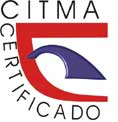Thermodynamic stability diagram for the copper/water/amylxanthate floatation system
Keywords:
Eh-pH diagram, xanthate, copper amylxanthate, copper, ionic flotation.Abstract
The objective of the investigation was to develop a thermodynamic stability diagram which characterizes the copper/water/amylxanthate flotation system as part of the theoretical fundamentation needed to analyze the copper ions flotation process using potassium amylxanthate as flotation collector reagent. Using the main chemical reactions of the system and with the assistance of the Medusa software the Eh-pH diagram was obtained in which the stability zones were defined for the different chemical species in order to analyze the flotation process of copper ions with amylxanthate collector reagent. It was established that thexantogenated species of cupper (I) and (II) co-exist within the pH range of 4 to 13. This ratio decreases as the pH increases.Downloads
References
ABRAMOV, A. A. & K. S. E. FORSSBERG. 2005. Chemistry and optimal conditions for copper minerals flotation: Theory and practice. Mineral Processing and Extractive Metallurgy Review 26:77- 143
AGPS. 1995. Sodium ethyl xanthate. 1-64
BASILIO, C.; M. D. PRITZKER & R. H. YOON. 1985. Thermodinamics, electrochemistry and flotation of de calcocite-potassium ethyl xanthate system. 114th AIME Annu. New York, 85-86,
BULATOVIC, S. M. 2007. Handbook of flotation reagents. Chemistry, theory and practice: Flotation of sulfide ores. Elsevier Science & Technology Books, 443 p.
CROZIER, R. D. 1992. Flotation: Theory, reagents and ore testing. 1. Pergamon Press plc, Great Britain, 1-343 p.
DE DONATO, P. et al. 1989a. Stability of the amylxanthate ion as a function of ph: Modelling and comparison with the ethylxanthate ion. International Journal of Mineral Processing 25:1-16
DUDENKOV, S.; L. SHUBOV & L. GLAZUNOV. 1980. Fundamentos de la teoría y la práctica de empleo de reactivos de flotación. p.
FUERSTENAU, D. W. 1999. Advances in flotation technology. SME: Littleton, 3-21 p.
HARRIS, P. J. 1988. Reagents in mineral technology. Marcel Dekker, New York, p.
HARRIS, P. J. & N. P. FILKENSTEIN. 1975. Interactions between sulphide minerals and xanthates, i. The formation of monothiocarbonate at galena and pyrite surfaces. International Journal of Mineral Processing 2:77
HEPEL, T. & A. POMIANOWSKI. 1977. Diagrams of electrochemical equilibria of the system copper-potasium ethylxanthate-water at 25ºc. International Journal of Mineral Processing 4:245- 361
IWASAKI, I. & S. R. B. COOKE. 1958. The decomposition of xanthate in acid solution. Journal of the American Chemical Society 80:285-288
JOLY, H. A.; R. MAJERUS & K. C. WESTAWAY. 2004a. The effect of diethylenetriamine on the formation of Cu2+, Ni2+, and Fe3+ amyl xanthate ion complexes. Minerals Engineering 17:1023-1036
JONES, M. H. & J. T. WOODCOCK. 1986. Dixanthogen determination in flotation liquors by solvent extraction and ultraviolet spectrometry. Analytical Chemistry 58:588-591
JONES, M. H. & J. T. WOODCOCK. 1973. Ultraviolet spectrometry of flotation reagents with special reference to the determination of xanthate in flotation liquors. Chameleon Press Ltd, London, 1- 10 p.
KAKOVSKY, I. 1957. Physicochemical properties of some flotation reagent and their salts with ions of heave iron-ferrous metals. 225-237
KLAUDITZ, W. 1939. The ripening of viscose. Tech - Wise TI:251- 259
LAZARIDIS, N. K. et al. 1992. Dissolved-air flotation of metal ions. Separation Science and Technology 27 (13):743 - 1758
LAZARIDIS, N. K. et al. 2004b. Copper removal from effluents by various separation techniques. Hydrometallurgy 74:149-156
LEJA, J. 1982. Surface chemistry of froth flotation. Plenum, New York, 1-228 p.
MATIS, K. A. & P. MAVROS. 1991. Recovery of metals by ion flotation from dilute aqueous solutions. Separation and Purification Methods 20:1- 48
OBREGÓN, H. 1990. Xantatos en sistemas de flotación. Reacciones fenómenos y mecanismos. 5
POMIANOWSKY, A. & J. LEJA. 1963. Spectrophotometric study of xanthate and dixanthogen solutions. Canadian Journal Chemistry 41:2219- 2230
PUIGDOMENECH, I. 2004. Software equilibrio químico.
RAMÍREZ, B. 2011. Remoción por flotación iónica de iones cobre con amilxantato de potasio. [ISMM]. 120 p.
RAO, S. R. 1971. Xanthates and related compounds. 1. Marcell Dekker, New York, 1-504 p.
SOMASUNDARAN, P. & B. MOUDGIL. 1988. Reagents in minerals technology.
STALIDIS, G. A.; K. A. MATIS & N. K. LAZARIDIS. 1989b. Selective separation of Cu, Zn, and As from solution by flotation techniques. Separation Science and Technology 24 (1):97 - 109
SUN, Z. & W. FORSLING. 1997. The degradation kinetics of ethyl-xanthate as a function of pH in aqueous solution. Minerals Engineering 10 (4):389-400
TIPMAN, R. N. & J. LEJA. 1975. Reactivity of xanthate and dixanthogen in aqueous solution of different pH. Colloid and Polymer Science 253:4- 10
ULLMANN´S. 2002. Xanthates. 423
WOODS, R.; C. A. YOUNG & R. H. YOON. 1990. Ethyl xanthate chemisorption isotherms and Eh-pH diagrams for the copper/water/xanthate and chalcocite/water/xanthate systems. International Journal of Mineral Processing 30:17-33
YOUNG, C. A. 1987. Non stoichiometry of chalcocite en water-xanthate systems. [Virginia Polytechnic Institute and State University]. 296 p.
ZOHIR, N.; B. MUSTAPHA & D. ABD-ELBAKI. 2009. Synthesis and structural characterization of xanthate (kex) in sight of their utilization in the processe of sulphides flotation Journal of Minerals & Materials Characterization & Engineering 8 (6):469-477
Published
How to Cite
Issue
Section
- Authors retain copyright and guaranteeing the right magazine to be the first publication of the work as licensed under a Creative Commons Attribution-NonCommercial that allows others to share the work with an acknowledgment of the work's authorship and initial publication in this journal.
- Authors may establish separate supplemental agreements for the exclusive distribution version of the work published in the journal (eg, place it in an institutional repository or publish it in a book), with an acknowledgment of its initial publication in this journal.
- Authors are allowed and recommended to disseminate their work through the Internet (e.g., in institutional telematic archives or on their websites) before and during the submission process, which can produce interesting exchanges and increase citations of the published work. (See The effect of open access)










